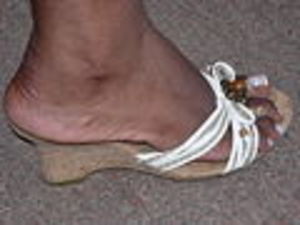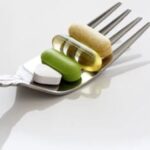Heel calluses form along the rim of the heel. Some causes are excess weight, open-back shoes, standing a lot, vitamin deficiency and dry skin. An unsightly build-up of dead skin, heel calluses are the body’s defense against what would otherwise tear the skin. Where there is pressure, calluses form. Heel calluses can become painful when they crack. They can also bleed and become infected. To remove heel calluses and prevent them from reoccurring, here are several inexpensive home remedies that have been tried with varying success.
Warm Water and Abrasion
Lukewarm water and a soaking container are two essentials needed to soften heel calluses. A third essential is some sort of abrasive item–such as a pumice stone, a rough dry towel, a firm brush, sandpaper, or an emery board. Those with diabetes or circulatory conditions should uses caution with regard to the abrasive material used; a rough dry towel shouldn’t tear the skin or cause infection.
Some home remedies for removing heel calluses suggest the use of additives to the warm water–such as aspirin, vinegar, Epson salt, table salt, or baking soda. But the safest way–one that brings with it no further complication–is just using warm water and a mild abrasive.
It takes about 10-15 minutes for heel calluses to soften in warm water. Then heel calluses can be rubbed with the abrasive item. The warm water helps loosens the dry skin, making removal easier. Rather than using a soaking container, heel calluses can also be removed after a warm shower or bath, while they are soft. Better yet, nature does a fair job of removal, all by itself. A walk on beach allows sand to serve as the abrasive material.
Moisturizers or Lotions
Using moisturizer on a regular basis helps get rid of heel calluses and helps prevents new calluses from forming. Lotions that are lanolin-based work well; as do Vaseline and Vitamin E. It’s a slow process and may take a few weeks; however, a moisturizer does helps work-away at heel calluses and discourages new calluses from forming.
One word of caution, no matter how tempting, a razorblade shouldn’t be used to remove dead skin. Instead, calluses should be softened and removed naturally with warm water and an abrasive material or with lotions and moisturizers.
Proper Shoes and Padding
Shoes with high heels, open-back shoes, thin soles on shoes, and walking barefoot can all cause heel calluses. Shoes with good padding help lessen pressure to the heel. Thick cotton socks can add extra cushion to the heel. In addition, a heel cup may help keep the heel from sliding around inside the shoe. Heel cups contain the heel in a certain space and don’t allow the base of the heel to spread out. This spreading-out pressure is a major cause of heel calluses.
Medical Treatment
Minor cracks in heel calluses are more of a nuisance, but deep cracks can be painful; they can bleed and become infected. Care should be taken to remove heel calluses before they become thick and crack. If heel calluses are painful, it’s important to see a medical professional. Some calluses can be a result of circulation problems. Diabetics, especially, need to use caution when it comes to potential infection of the extremities.
Over-the-counter creams are sold specifically for calluses. But for simple, less-expensive alternatives, these home remedies have been found to be effective for removing heel calluses.


